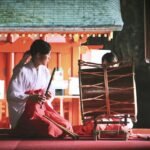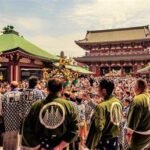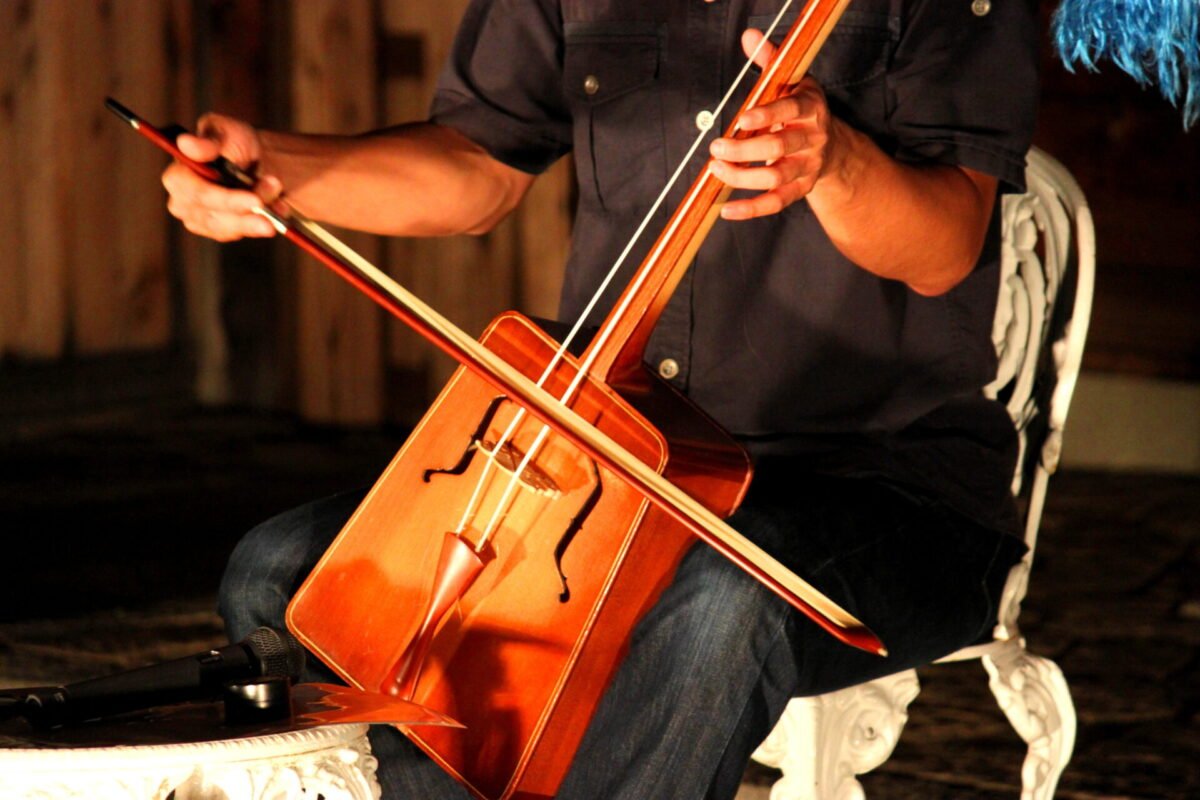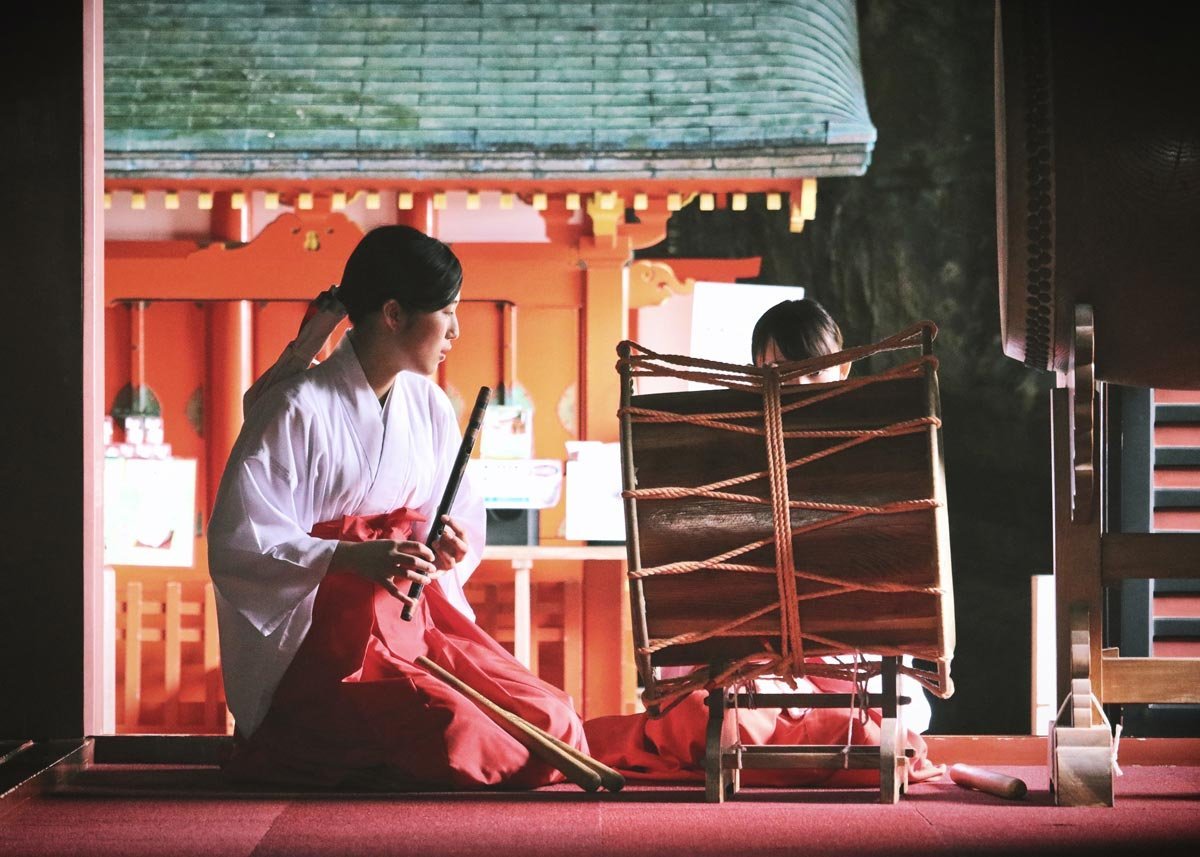Traditional Japanese music is a rich tapestry of sounds and rhythms that reflect the country’s cultural heritage and history. This music, deeply intertwined with Japan’s historical and spiritual traditions, employs a variety of unique instruments that each contribute to its distinctive sound. Exploring these instruments offers insight into the historical and cultural significance of Japanese music.
The Koto: A Symbol of Elegance
The koto is one of Japan’s most iconic traditional instruments, recognized for its elegant, harp-like appearance. This stringed instrument has 13 strings stretched over a long, wooden body and is played by plucking the strings with picks attached to the fingers. The koto’s serene and melodic tones are central to many classical Japanese music performances and ceremonies. Historically, it was introduced from China and has evolved into a symbol of refined taste and sophistication in Japanese culture.
The Shamisen: The Soul of Japanese Folklore
The shamisen is a three-stringed instrument with a distinctive, percussive sound, often associated with Japanese folk music and theater. Its body is traditionally made from a wooden frame covered with skin, giving it a unique timbre. The shamisen is played with a large plectrum, and its music accompanies various traditional performances such as bunraku (puppet theater) and kabuki (classical drama). The instrument’s versatility allows it to convey a range of emotions, making it integral to Japan’s cultural and theatrical arts.
The Biwa: The Echoes of Ancient Legends
The biwa is a short-necked lute used in traditional Japanese storytelling and music. It has four strings and a pear-shaped body, producing a deep, resonant sound. The biwa is often associated with the biwa hōshi, itinerant blind performers who used it to narrate epic tales such as the Heike Monogatari (The Tale of the Heike). This instrument plays a crucial role in preserving Japan’s literary and musical heritage, connecting modern audiences with the country’s legendary past.
The Shakuhachi: The Breath of Zen
The shakuhachi is a bamboo flute known for its haunting, meditative sound. This instrument, traditionally used by Zen Buddhist monks, is characterized by its ability to produce a wide range of expressive tones through breath control. The shakuhachi’s music often evokes themes of nature and spirituality, aligning with Zen practices of mindfulness and contemplation. Its simplicity and depth make it a powerful tool for both musical and spiritual expression.
The Taiko: Rhythms of Tradition
Taiko drums are a staple of Japanese traditional music, known for their dynamic and powerful rhythms. These drums come in various sizes and shapes, ranging from the small shoko to the large odaiko. Taiko drumming is often featured in festivals and ceremonies, and its energetic performances are accompanied by choreographed movements. The taiko’s role in Japanese culture extends beyond music, serving as a means of community expression and celebration.
The Hichiriki: The Sound of Imperial Court Music
The hichiriki is a double-reed instrument used primarily in gagaku, the ancient court music of Japan. It has a distinctive, piercing sound and is essential in creating the complex textures of gagaku ensembles. The hichiriki’s role in Japanese court music underscores its historical significance in ceremonial and ritualistic contexts. Its unique timbre contributes to the ancient, otherworldly quality of gagaku, reflecting the grandeur and formality of imperial Japan.
The Shō: The Harmonious Celestial Voice
The shō is a mouth organ with a set of vertical bamboo pipes, each producing a single pitch. This instrument is crucial in gagaku, providing a rich, harmonic backdrop to the ensemble’s performance. The shō’s ethereal, harmonic sound is reminiscent of celestial music, adding a layer of complexity and depth to the traditional compositions. Its presence in Japanese music underscores the blend of spiritual and artistic elements inherent in gagaku.
The Nohkan: The Voice of Noh Theater
The nohkan is a transverse bamboo flute used in noh theater, a traditional Japanese performing art that combines drama, music, and dance. The instrument’s sound is integral to noh performances, providing a musical foundation that supports the actors’ performances. The nohkan’s ability to produce a range of subtle tones and its role in enhancing the dramatic atmosphere of noh theater highlight its importance in Japan’s cultural and artistic heritage.
The Kokyū: The Bowed String Tradition
The kokyū is a bowed string instrument similar to a violin, but with a distinctively Japanese design. It has a unique timbre and is used in both traditional and contemporary Japanese music. The kokyū’s role in Japanese music often involves accompanying vocal performances and storytelling. Its versatility and rich sound make it a valuable component of Japan’s musical traditions.
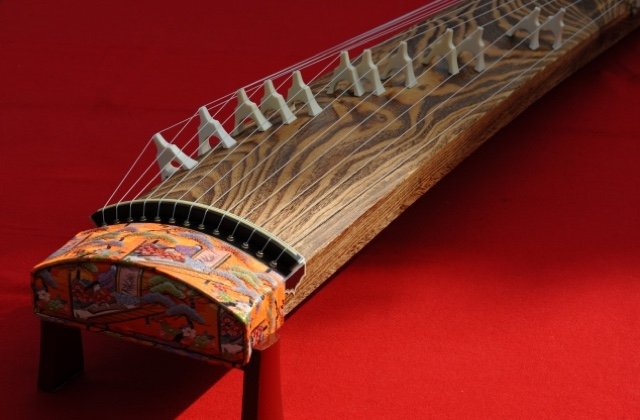
Conclusion
Traditional Japanese music is a reflection of the country’s rich cultural heritage, with each instrument contributing its unique sound to the tapestry of Japanese musical history. From the elegant koto to the rhythmic taiko drums, these instruments offer a window into Japan’s past and present, showcasing the depth and diversity of its musical traditions. Understanding these instruments not only enhances appreciation for Japanese music but also connects listeners with the historical and cultural narratives that have shaped this vibrant art form.


